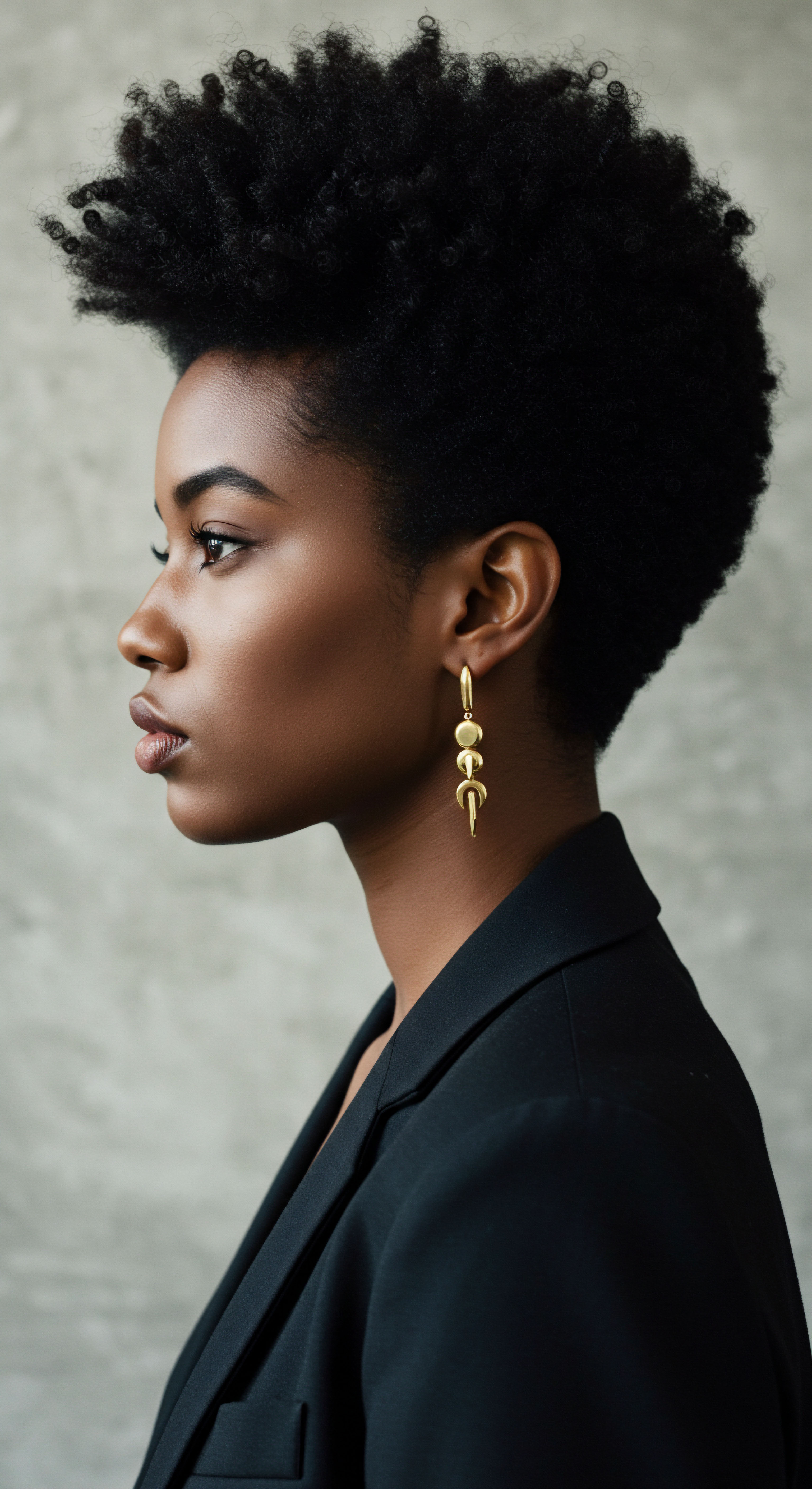
Roots
As twilight descends and the world settles into its quiet repose, our hair, too, seeks a gentle sanctuary. Yet, for many with textured strands, the night can conceal a silent struggle. The very bedding meant to cradle us in comfort can, unwittingly, become a source of stress for delicate curls and coils.
Cotton, a widely favored textile, with its inherent absorbency and microscopically uneven surface, often engages in a subtle yet persistent friction with hair, potentially disrupting its cuticle and leading to diminished health over time. Consider then, the alternative, a smooth counterpoint to this nightly tug ❉ the silken embrace.
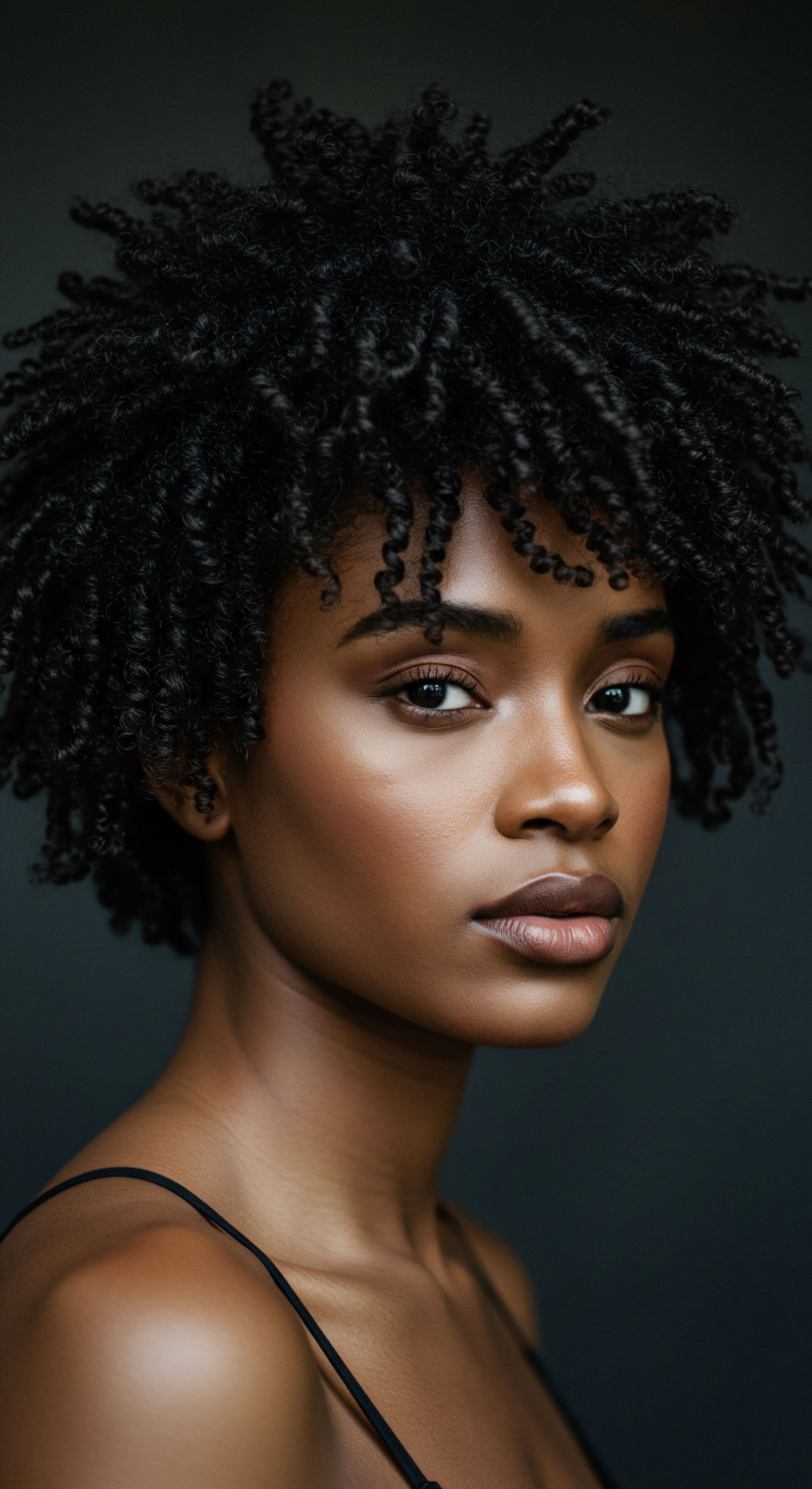
The Hair’s Outer Shield
Each strand of hair, regardless of its unique pattern or coil, possesses an outer layer, the cuticle. Picture this cuticle as a series of overlapping scales, much like shingles on a roof. When hair is healthy and well-tended, these scales lie flat, creating a smooth, reflective surface that locks in moisture and guards the inner cortex. This compact arrangement contributes to shine and resilience.
Conversely, when these scales are lifted or roughened, the hair becomes vulnerable. Moisture escapes more readily, and the strand itself becomes more susceptible to damage, presenting as dryness, dullness, and eventually, breakage.
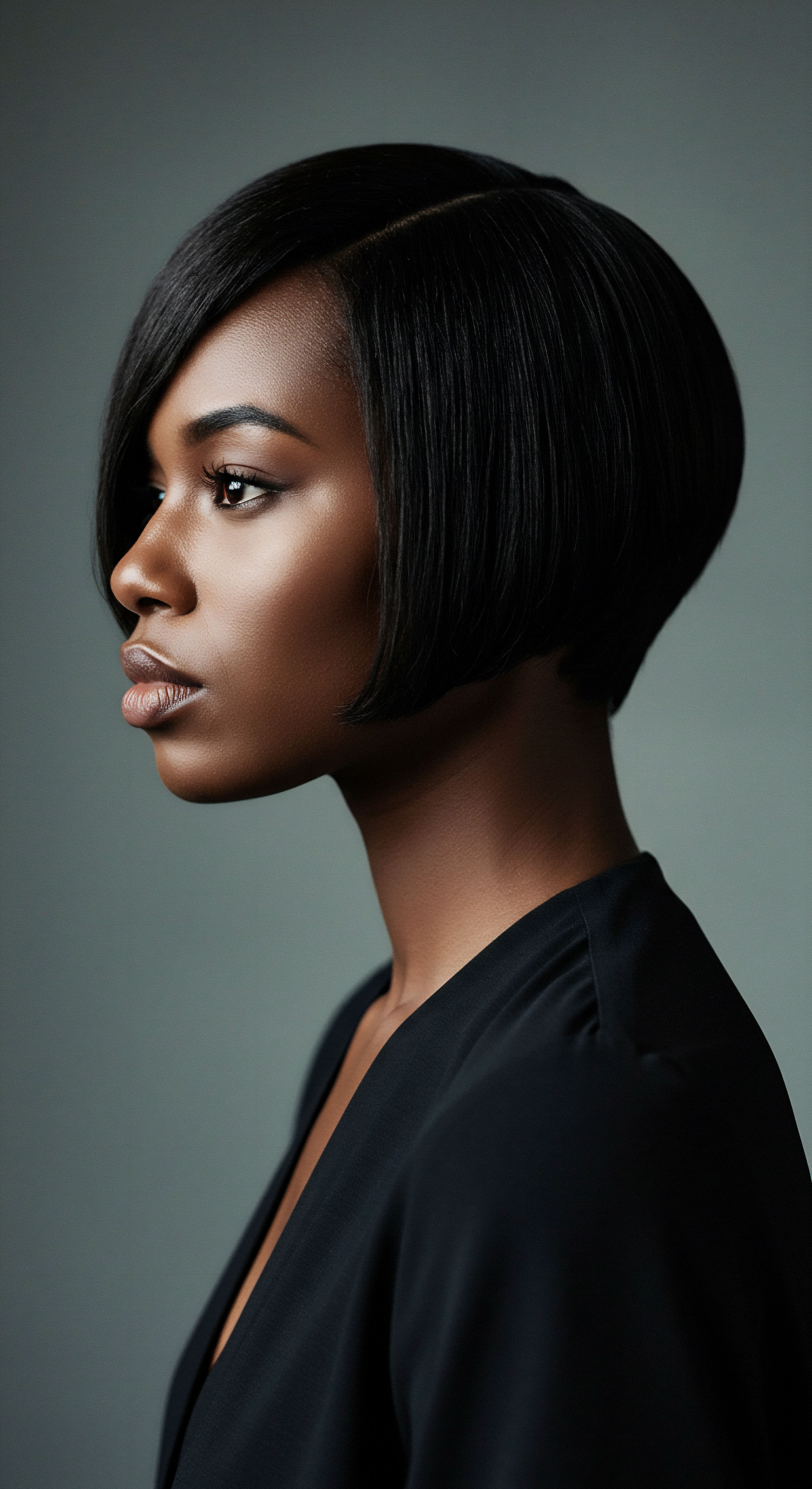
The Cotton Conundrum
For generations, cotton has been the standard for sleep surfaces, its soft touch a familiar comfort. However, at a microscopic level, cotton fibers present a far different landscape to our hair. These fibers, while seemingly soft to our touch, possess a naturally uneven, somewhat coarse texture. As we shift and turn during our hours of slumber, our hair rubs against this surface.
The cotton’s inherent absorbency also means it readily draws moisture from anything it touches, including our hair. For textured hair, which often battles a natural inclination towards dryness due to its coiled structure, this moisture extraction is particularly detrimental. It strips away vital hydration and natural oils, leaving strands parched and more brittle, thus priming them for mechanical damage.
Cotton pillowcases, while comfortable, can become an unwitting antagonist for hair due to their coarse, absorbent fibers.
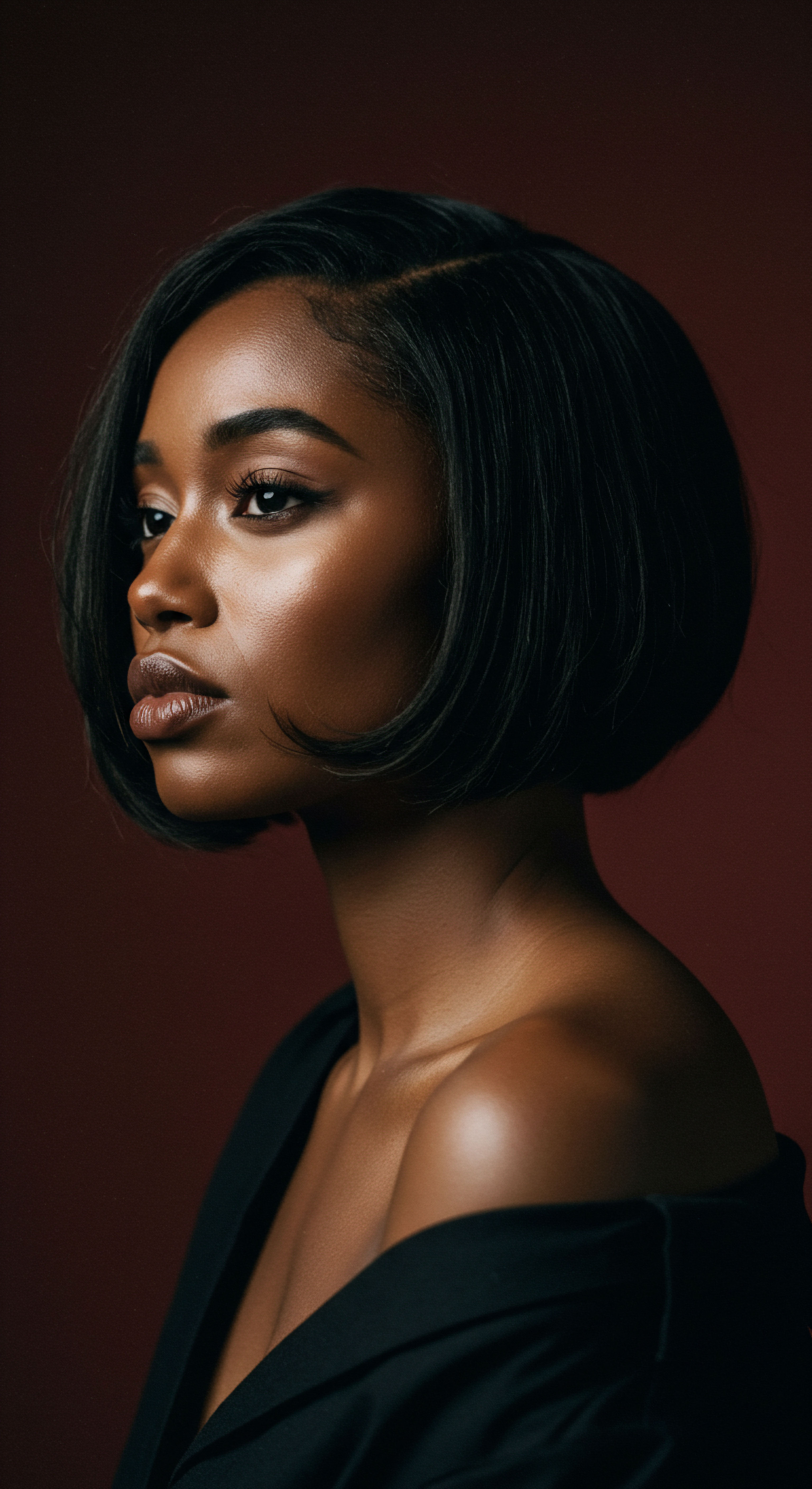
The Silken Secret
In stark contrast to cotton, silk presents a remarkably different interaction with hair. Silk is a natural protein fiber, spun by silkworms. Its fundamental composition and structure result in a surface of exceptional smoothness. When hair glides across silk, the friction is dramatically reduced.
This minimized resistance allows the hair’s delicate cuticle layers to remain undisturbed, lying flat and sealed. This preservation of the cuticle is paramount for maintaining hair’s internal moisture and preventing the outward signs of damage. Furthermore, silk possesses a lower absorbency rate compared to cotton. This means it is less likely to siphon away the hair’s natural oils and any applied conditioning products, allowing strands to retain their essential hydration throughout the night.
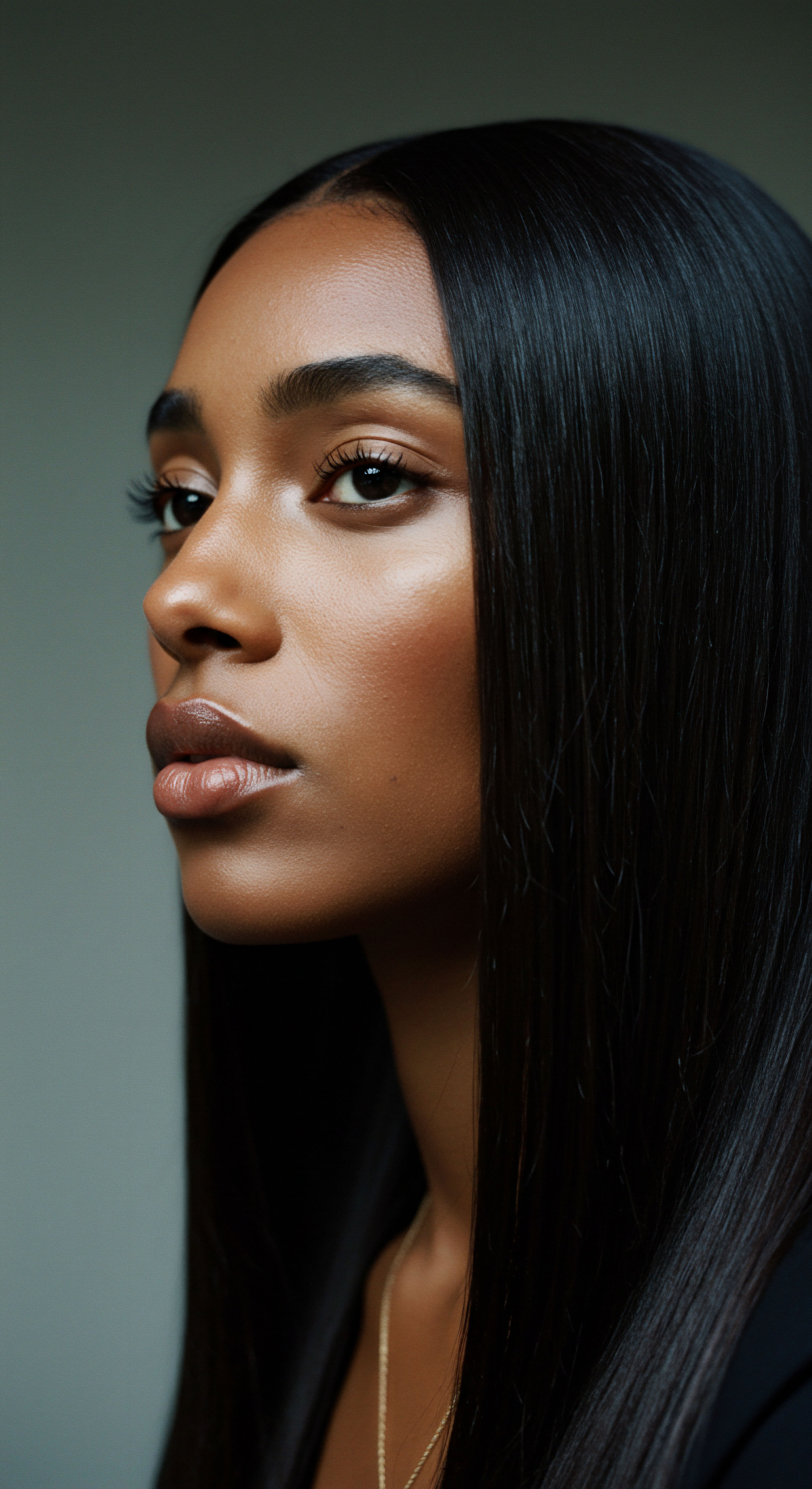
Microscopic Differences Unveiled
The distinction between silk and cotton, at a granular level, illuminates why one safeguards hair while the other may contribute to its undoing. The very architecture of these fibers dictates their interaction with the hair shaft. Cotton fibers are relatively short and possess a rough, uneven surface, which creates mechanical drag. Silk, particularly mulberry silk, comprises long, smooth protein filaments, creating a virtually frictionless plane.
This difference is measurable. A study published in the Journal of Cosmetic Dermatology, for instance, suggests that the smooth surface of a silk pillowcase can reduce hair friction by up to 43% compared to other materials. This significant reduction directly translates to less pulling, less snagging, and less abrasion against the hair cuticle, preserving its integrity and, by extension, the hair’s overall health and appearance.
| Fiber Type Cotton |
| Surface Texture Rough, uneven |
| Moisture Absorption High (absorbent) |
| Hair Interaction Increased friction, moisture loss, cuticle lifting |
| Fiber Type Silk |
| Surface Texture Smooth, uniform |
| Moisture Absorption Low (retains moisture) |
| Hair Interaction Reduced friction, moisture retention, cuticle preservation |
| Fiber Type The inherent properties of silk offer a gentle environment for hair during sleep. |

Ritual
Stepping beyond the foundational understanding of fibers, we turn our attention to the rhythms of daily life, particularly those quiet hours when we surrender to sleep. The choice of what cradles our head at night transforms from a mere comfort into a deliberate act of hair preservation. This section invites you to consider the tangible wisdom found in adapting our nighttime practices, offering practical guidance for cultivating a routine that honors and protects the unique vitality of textured hair. It is a space for exploring methods and tools that translate scientific understanding into tangible benefits for your strands.

The Nightly Hair Choreography
Our sleep, far from being a static state, involves a subtle yet constant movement. Tossing and turning, shifting positions, all contribute to a dynamic interaction between our hair and the sleep surface. For those with textured hair, this nightly choreography can be particularly taxing. Curls, coils, and waves, with their inherent structural complexity, are more prone to tangling and mechanical damage when subjected to abrasive surfaces.
The very act of movement against a coarse pillowcase can unravel delicate curl patterns, create knots, and abrade the hair shaft, leading to frizz and eventual breakage. This constant friction can also disrupt the scalp’s delicate balance, potentially affecting natural oil distribution.
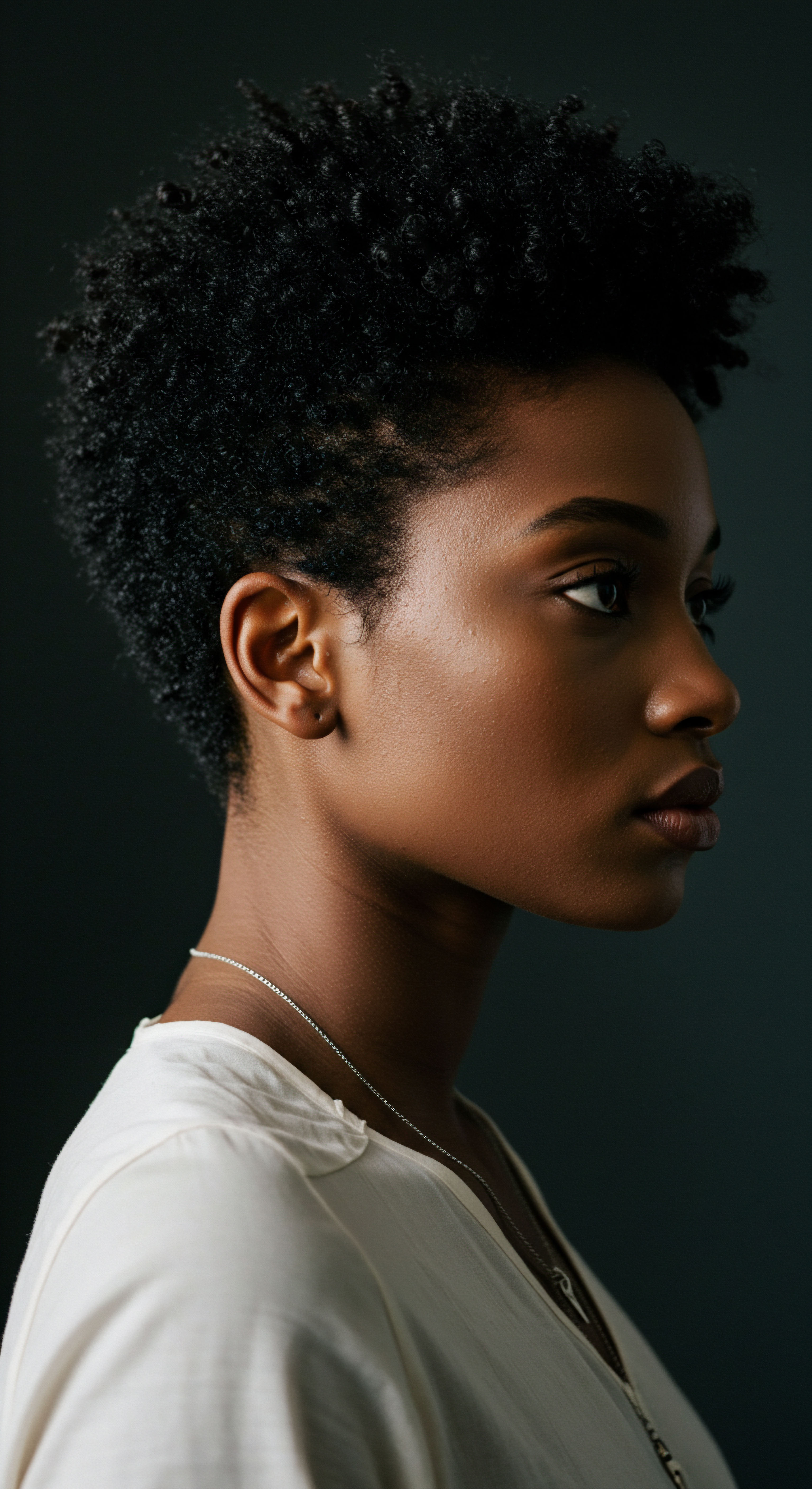
The Silk Sanctuary
The transition to a silk sleep surface, be it a pillowcase or a bonnet, creates a nightly sanctuary for hair. The smooth, supple texture of silk allows hair to glide effortlessly, rather than catching and pulling. This drastically reduces the mechanical stress placed upon each strand. For textured hair, this translates to curls and coils remaining largely undisturbed, preserving their definition and minimizing frizz upon waking.
Beyond the immediate aesthetic benefits, this reduction in friction is a powerful preventative measure against hair breakage. The integrity of the hair cuticle is maintained, sealing in precious moisture and natural oils that are so vital for the health of textured hair.
Adopting silk for nighttime hair protection is a conscious step towards preserving hair’s inherent moisture and structural integrity.
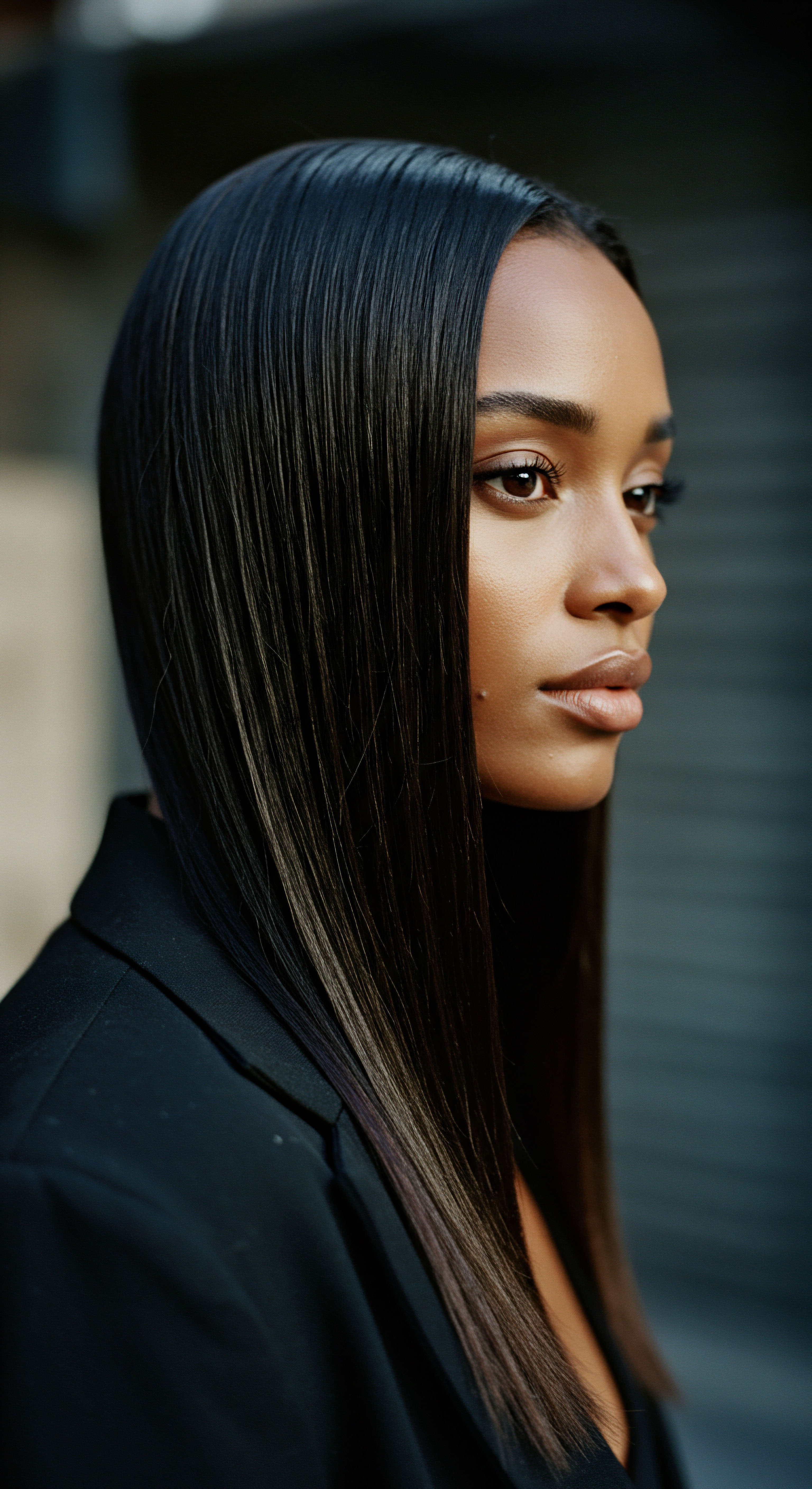
Beyond the Pillowcase
While silk pillowcases are a popular choice, the concept of a silk sanctuary extends to other protective accessories. Silk bonnets and scarves offer an equally effective, and for some, a more comprehensive, shield for hair during sleep. These wraps fully encompass the hair, providing an all-around barrier against friction, regardless of sleep position. They are particularly beneficial for those with longer hair, intricate hairstyles, or those who move considerably during the night.
The choice between a pillowcase and a bonnet often comes down to personal comfort and the specific needs of one’s hair and styling preferences. Both options embody the core principle of minimizing friction and maintaining moisture, thereby reducing breakage.
- Silk Pillowcase ❉ Offers a gentle surface for hair to rest upon, reducing friction and absorbing less moisture than cotton.
- Silk Bonnet ❉ Provides an encompassing shield for hair, preserving styles and offering complete protection from friction and moisture loss.
- Silk Scarf ❉ A versatile option for wrapping hair, adaptable to various styles and lengths, offering similar protective benefits.
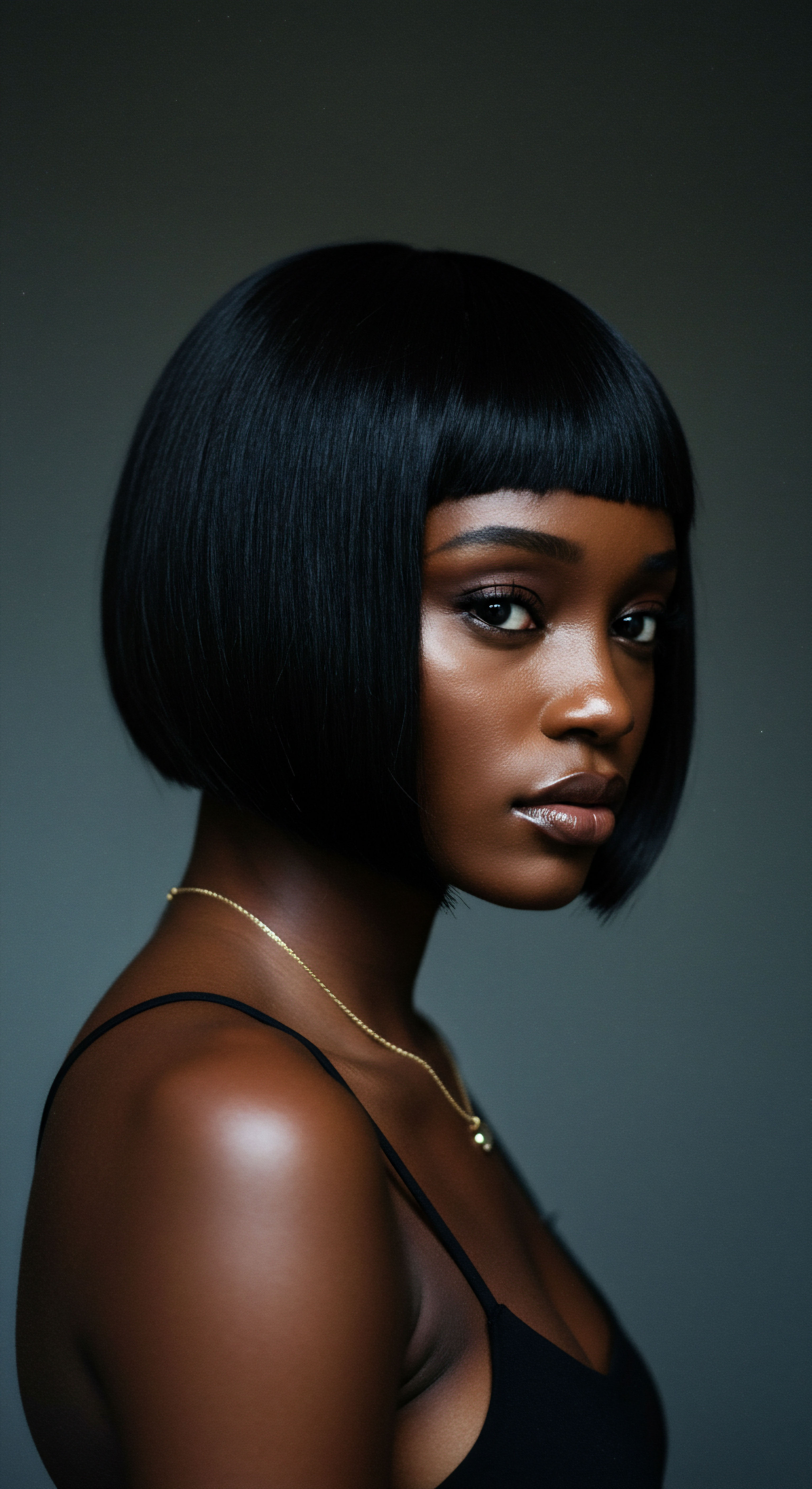
Integrating Silk Into Your Regimen
The decision to incorporate silk into a nighttime hair regimen is a simple yet impactful one. It complements existing hair care practices, amplifying their benefits. For instance, after applying leave-in conditioners or hair oils, sleeping on silk ensures that these products remain on the hair, providing continuous nourishment, rather than being absorbed by a cotton pillowcase.
This synergistic approach enhances moisture retention and fortifies the hair against environmental stressors. The investment in silk, therefore, extends beyond a mere comfort item; it becomes a cornerstone of a proactive hair health strategy, particularly for textured hair types that demand thoughtful, consistent care.
For individuals with high porosity hair, which readily absorbs moisture but struggles to retain it, the non-absorbent nature of silk is particularly beneficial. It helps to keep the hair hydrated, preventing the rapid loss of moisture that often leads to dryness and brittleness. This gentle interaction and moisture-preserving quality of silk make it an indispensable tool in any regimen aiming for resilient, vibrant textured hair.

Relay
As we deepen our understanding of silk’s protective capacities, we step into a realm where science, cultural practice, and the intricate dance of molecular structures converge. This section beckons us to consider not just the superficial benefits, but the profound, often unseen, interactions that unfold each night. It is an invitation to view the simple act of sleeping on silk through a lens of sophisticated inquiry, exploring its biological underpinnings, its cumulative impact, and its deep roots within global hair traditions. Here, we move beyond the obvious, seeking connections that illuminate the comprehensive efficacy of silk for hair vitality.
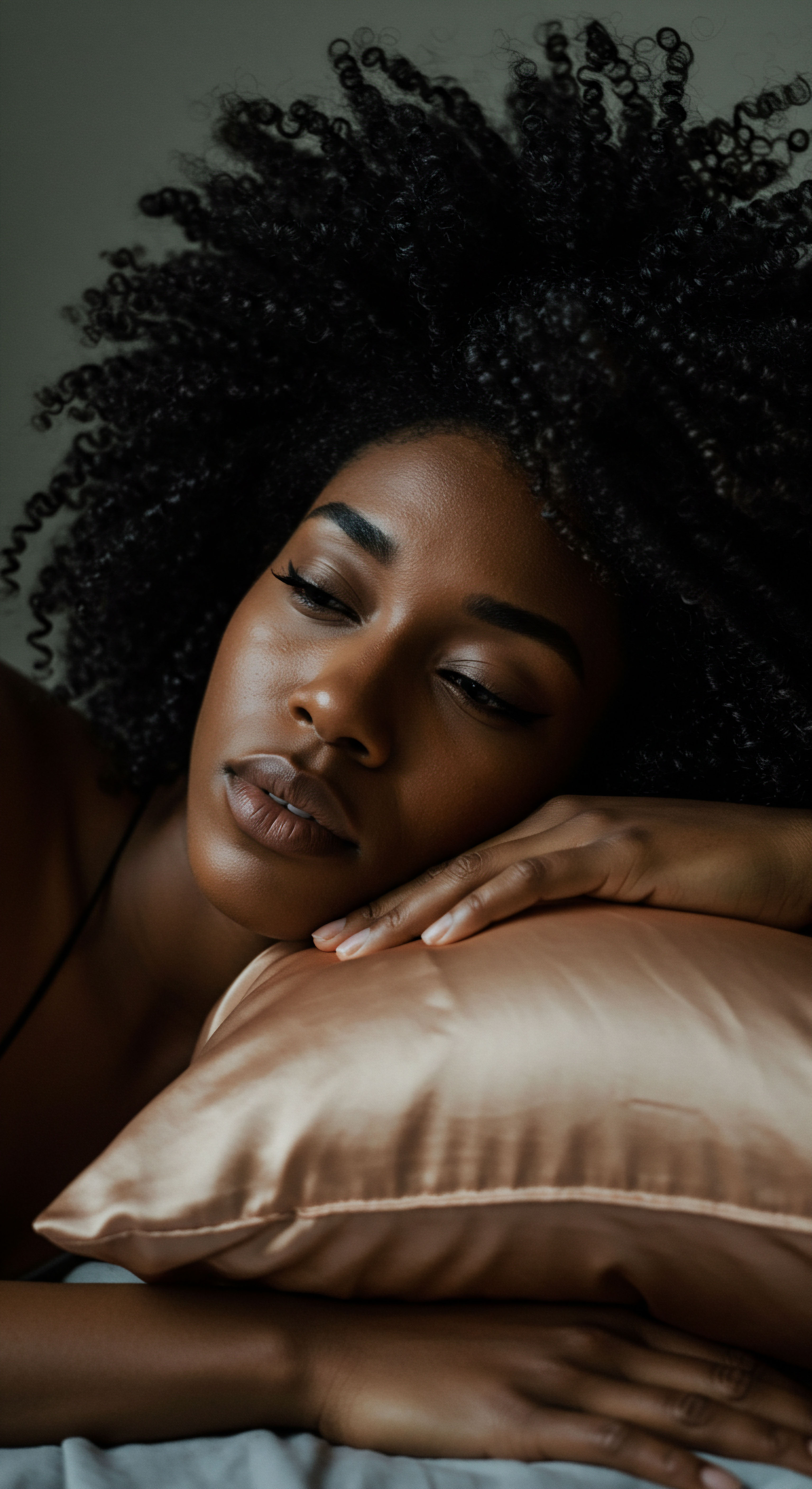
The Protein Pact
At its core, the remarkable compatibility between silk and human hair stems from their shared protein-based composition. Hair is primarily composed of keratin, a fibrous protein. Silk, particularly Bombyx mori silk (mulberry silk), is composed of fibroin and sericin proteins. The structural similarities between these proteins mean that silk interacts with hair in a gentle, harmonious manner.
When hair slides across silk, the cuticle layers remain undisturbed, rather than being lifted or snagged as they would against rougher surfaces. This preservation extends to the cuticle’s protective lipid layer, which guards against environmental damage and moisture loss.
Consider the molecular architecture ❉ both keratin and silk proteins possess a smooth, organized surface at the microscopic level. This inherent smoothness of silk fibers reduces the coefficient of friction significantly. For example, some research indicates that silk can reduce friction between hair strands and between hair and fabric by a considerable margin.
This is a physical prevention mechanism, unlike many anti-frizz products that temporarily mask symptoms. Silk bonnets, for instance, dissipate static electricity that builds up during sleep movement, preventing the lifting of the hair cuticle that creates frizz.

Cumulative Effects of Friction
While a single night’s sleep on a rough surface may seem insignificant, the effects of friction on hair are cumulative. Over time, repeated abrasion against cotton pillowcases can lead to a phenomenon akin to mechanical weathering on a hair strand. This constant rubbing progressively damages the cuticle, leading to increased porosity, dehydration, and ultimately, structural weakness. This continuous assault results in a cycle of dryness, frizz, split ends, and ultimately, hair breakage.
For individuals with textured hair, whose cuticle layers may already be more prone to lifting due to the hair’s natural bends and twists, this cumulative damage is particularly pronounced. A consistent nightly ritual with silk actively disrupts this destructive cycle, allowing hair to retain its natural strength and elasticity over the long term.
The gentle interaction of silk provides a crucial shield against the relentless, cumulative damage of nightly friction.

How Does Hair Porosity Impact Silk’s Protective Capacity?
Hair porosity, which describes the hair’s ability to absorb and retain moisture, plays a significant role in how silk benefits different hair types. Hair with high porosity, characterized by more open or raised cuticles, readily absorbs moisture but also loses it quickly, leading to dryness and frizz. For these strands, silk’s low absorbency is a considerable advantage. It acts as a barrier, preventing the rapid escape of moisture and natural oils, thus helping to seal in hydration.
Conversely, low porosity hair, with its tightly bound cuticles, struggles to absorb moisture. While silk may not directly aid absorption, its smooth surface prevents further mechanical disruption to these already compact cuticles, allowing any applied products to remain on the hair surface where they can gradually work their way in, rather than being rubbed off.
This tailored benefit across the porosity spectrum underscores silk’s versatility. It’s not a one-size-fits-all solution, but rather a material whose properties align with the fundamental needs of hair at various states of openness and moisture retention. For instance, hydrolyzed silk protein is often used in hair products for high-porosity hair to help strengthen strands and fill gaps in the cuticle, mirroring silk’s external protective benefits.

Cultural Guardians of Nighttime Hair
The practice of protecting hair during sleep with specialized coverings is not a modern innovation; it is a tradition with deep historical and cultural roots, particularly within Black and mixed-race communities. For generations, head wraps, bonnets, and scarves, often made from silk or satin, have served as essential tools for preserving hair health and styles. This practice is a testament to ancestral knowledge, a wisdom passed down through families, recognizing the vulnerability of hair during sleep and the importance of its preservation.
From ancient China, where silk production originated and silk hair wraps were used to signify status and protect elaborate hairstyles, to the intricate hair rituals of Indian women who used silk scarves to shield their hair from environmental elements, and the historical use of silk in Middle Eastern cultures for head coverings, the thread of silk as a hair protector runs through global history. In African and Afro-Caribbean cultures, the tradition of hair wrapping at night is not merely functional; it is a self-care ritual, a quiet act of defiance against societal pressures that historically undervalued textured hair, and a celebration of heritage. This deep cultural context adds another layer of meaning to the efficacy of silk, positioning it not just as a scientific marvel, but as a cherished component of identity and well-being.
- Ancient China ❉ Silk hair wraps were used by women to protect hair, maintain styles, and indicate social standing.
- India ❉ Silk scarves and wraps protected hair from dust and sun, and reduced friction.
- Middle East ❉ Silk head coverings shielded hair from harsh climates and helped retain moisture.
- African and Afro-Caribbean Cultures ❉ Nighttime hair wrapping with silk or satin is a long-standing tradition for health, style preservation, and cultural affirmation.

A Less Explored Angle of Hair Resilience
Beyond the well-documented benefits of reduced friction and moisture retention, a less frequently discussed aspect of silk’s impact on hair resilience lies in its potential influence on the hair’s elastic properties. While direct clinical studies on this specific mechanism are limited, the theory posits that by consistently reducing external stressors, silk creates an environment where the hair fiber experiences less mechanical fatigue. Hair, like any material, possesses a degree of elasticity, its ability to stretch and return to its original state. Repeated stretching, bending, and abrasive forces, such as those encountered during sleep on a rough surface, can gradually diminish this elasticity, making the hair more prone to snapping and breaking.
By minimizing these forces, silk may, over time, contribute to the preservation of the hair’s natural elastic limits, allowing it to withstand daily manipulation and environmental challenges more effectively. This subtle, long-term conditioning of the hair’s structural integrity, though not as immediately apparent as reduced frizz, represents a profound contribution to overall hair health. This proposition finds a quiet echo in the observed long-term benefits reported by those who consistently use silk for hair protection, even if the precise biomechanical pathways are still being fully charted.
| Fabric Type Silk |
| Surface Smoothness Superior |
| Moisture Interaction Retains moisture |
| Friction Reduction Highest reduction |
| Breathability High |
| Fabric Type Satin (Synthetic) |
| Surface Smoothness Good |
| Moisture Interaction Less absorbent than cotton, can trap heat |
| Friction Reduction Good reduction |
| Breathability Variable (can be lower) |
| Fabric Type Cotton |
| Surface Smoothness Rough |
| Moisture Interaction Absorbs moisture |
| Friction Reduction Minimal reduction |
| Breathability High |
| Fabric Type Polyester |
| Surface Smoothness Smooth (synthetic) |
| Moisture Interaction Moisture-wicking, static prone |
| Friction Reduction Some reduction |
| Breathability Lower |
| Fabric Type Silk stands out for its balanced benefits across multiple protective factors. |

Reflection
The gentle whisper of silk against hair, a simple act woven into the fabric of our nightly routine, carries with it a legacy of care and a promise of enduring health. From the microscopic dance of cuticles against fibers to the expansive tapestry of cultural practices, the choice of a sleep surface becomes a profound gesture of self-reverence. It speaks to an understanding that true well-being extends to every strand, recognizing their vulnerability and their inherent beauty. As we close our eyes each night, the silken embrace offers not just comfort, but a quiet affirmation of resilience, a silent guardian ensuring that the hair we awaken with mirrors the care we bestow upon it in slumber.
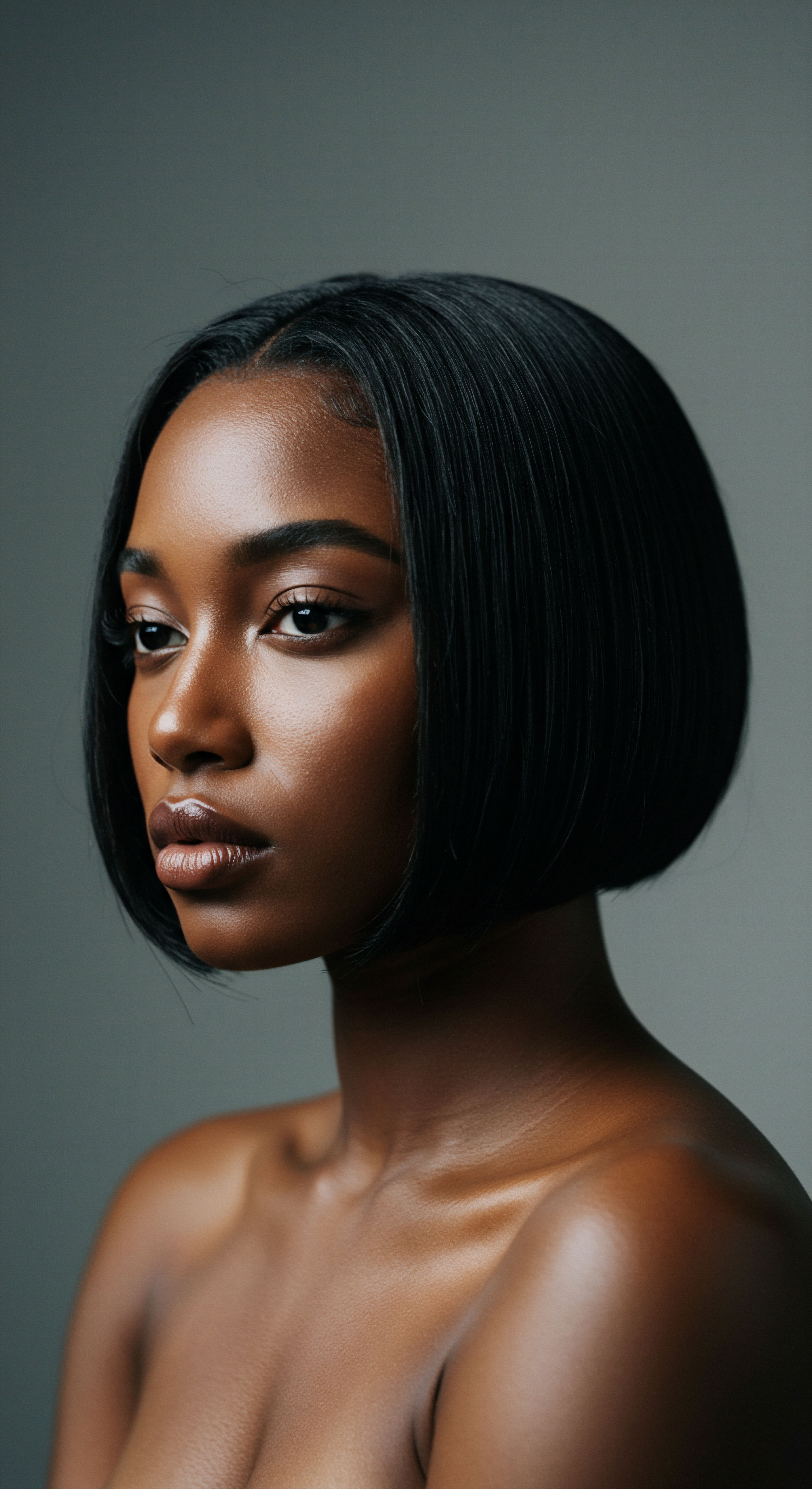
References
- Journal of Cosmetic Dermatology. “A study published in the Journal of Cosmetic Dermatology confirms that smoother fabrics like silk help prevent hair shaft damage caused by repeated friction.”
- International Journal of Trichology. “Research from the International Journal of Trichology (2011) explains that friction between hair fibers and pillowcase material can lead to increased breakage, tangling, and moisture loss.”
- Textile Research Journal. Li, Y. et al. (2011). “A study published in the Textile Research Journal (Li et al. 2011) confirmed that cotton absorbs significantly more moisture than silk, making silk a superior material for preserving skin hydration.”
- Journal of Cosmetic Dermatology. “A 2016 study in the Journal of Cosmetic Dermatology, compression forces from fabrics can distort collagen and elastic tissue over time—contributing to premature aging.”
- American Academy of Dermatology. “The AAD emphasizes that limiting skin stretching and compression can help prevent the formation of fine lines.”
- “Silk Hair Wraps in Different Cultures ❉ A Global Perspective.” Esme Luxury, 6 Aug. 2024.
- “Are silk pillowcases good for hair?” scooms, 22 Apr. 2024.
- “Silk for Skincare and Haircare.” Lab Muffin Beauty Science, 18 Oct. 2020.
- “Is It Better to Wrap Your Hair in Silk or Satin?” Esme Luxury, 11 Oct. 2024.
- “Unraveling The Myth ❉ Can Silk Pillows Prevent Hair Loss?” The Clifford Clinic, 28 Mar. 2024.
- “4 Reasons Your Pillowcase May Be Damaging Your Hair.” HairClub.
- “Hair Porosity and Silk ❉ Understanding the Perfect Pairing for Healthy Locks.” 6 Mar. 2024.
- “Why Silk Is the Ultimate Luxury for Your Hair.” luciano cimmarrusti, 5 Nov. 2024.
- “Comparing Silk to Satin Pillowcases ❉ Which Is Best for Hair?” Silkie.
- “Best Pillowcase Material for Healthy Hair ❉ Silk, Satin, and Sateen Options.” Belledorm, 3 July 2024.